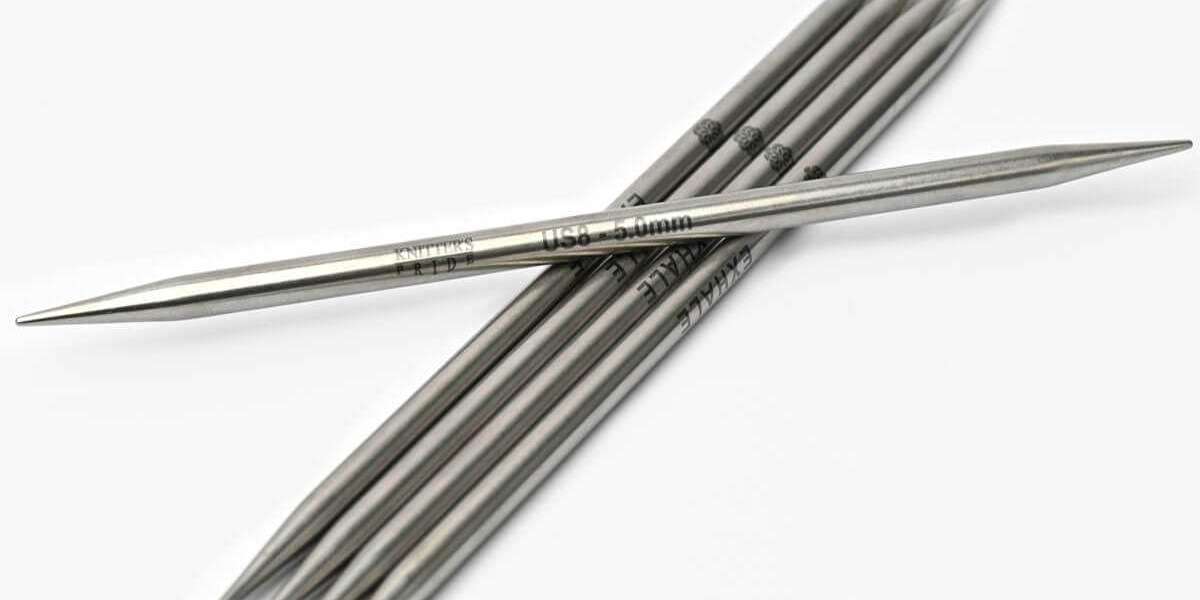Does weaving in yarn ends overwhelm you? If yes, then we’ve got help. After all your knitting project is not completed when it's off the knitting needles but when all yarn ends have been woven in securely in the fabric. Many times knitting patterns do not actually mention a way to weave in yarn ends assuming that you would know how to do it. There are many ways to weave in yarn ends. The most obvious requirement is a darning needle but there are other tricks too.
The method of weaving in yarn ends depends on the knitting patterns and the yarn fiber. While any regular knitting pattern would have two yarn ends, one when you cast stitches and one where you bind off, advanced knitting patterns such as colorwork will have multiple. One such intricate knitting pattern is lace. Lace knitting patterns are an beautiful but doesn’t make it easy to weave in ends. In this blog, we’ll walk you through ways to weave in yarn ends in a lace.
Lace knitting is often worked at a loose gauge (bigger knitting needles and lightweight yarns) which makes hiding the yarn tails more difficult. Also, given the many artfully put holes in the fabric it is often worrying for a knitter to not have the tails come undone. While for lace patterns you may prefer pointy stainless steel knitting needles, go for a blunt or round-tip darning needle in wood or acyclic to have best results. Most importantly make sure after your lace knitted fabric is washed and blocked according to the yarn instructions before attempting to weave in yarn ends.
Here are a few ways to do so:
1. Position your Yarn in
Lace knitting also comprises knit and purl stitches with additional techniques. When there are sections of stockinette stitch or garter stitch in between, there’s where you should bury the yarn. Split the yarn by unraveling the yarn to add an extra layer of security. Thread the darning needle. Insert the needle through the section of purls or legs of knit stitches and back through 5-8 stitches. Snip off the tail. A stub left behind will felt after few washes and strengthen the bond. This method works best when you use fuzzy yarn and thankfully many lace knitting patterns do so.
2. Use Duplicate Stitch
Using duplicate stitches will depend on your individual pattern and the exact position of the yarn tail. Thread the darning needle with the yarn tail. Go underneath the rib and underneath the two legs of the knit stitch. Now insert the darning needle underneath the next rib between the knit stitch one row below or above. Repeat these steps 6-8 times and then cut the tail. This method works the risk that whenever you stretch your lace pattern, you risk unraveling the duplicate stitch a bit. This method only works with fuzzy yarns that hide minor inconsistencies.
3. Weave in the Cast on Tail
If you wish to avoid weaving in ends later plan your project the right way. Knit with the cast-on tail of the yarn. This works best if use a standard long-tail cast-on. But even if you are not, keep enough tail to cover the first row. Pick up the yarn tail. Hold the tail and working yarn as it is one and then knit the first row or just the first 6-8 stitches with two strands held together. While a few stitches are fine it is recommended to knit the entire row for an uniform look.
However it is important to keep in mind that this method takes away a bit of stretchiness from your edge. So, it’s not ideal for hems and cuffs and any other kind of project where you want a stretchy edge. Also, knit very carefully in the second row. The two yarns may look like different stitches but they are not so make sure that you don’t end up with increases.
4. Using the Felted Join
An invisible way to join two tails together while also avoiding the darning needle is using the felted join.. Known as felted splice, spit splice/join, etc. all the names mean a join make by the knitters hand. Most natural fibers especially sheep wool are feltable. This means if you apply some heat, friction, and water, you will create a felt.
This method works best when you are joining a new yarn ball. Here you need to pick the yarn ends apart. Make sure you have atleast 6-inches of yarn. Either with your hand or your sharp-tipped knitting needle, unravel you yarn fiber. You will see that each yarn has many fiber ends. Now use some spit to wet the yarn. Stack the two ends upon each other and put them in the palm of your hands and rub it with a lot of pressure. You’ll see that two yarns have combined as one. Test the yarn with a light.
With these methods weaving in yarn ends is a lot smoother for lace knitting patterns. Make sure to always have the right size darning needle to weave in ends. The needle to weave in the yarn ends also works to seam ends and many other purposes.
Source: https://www.zupyak.com/p/3381894/t/weaving-in-yarn-ends-in-a-lace-knitting-pattern







